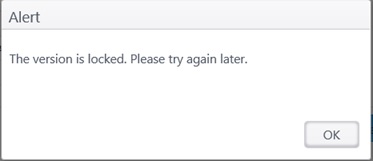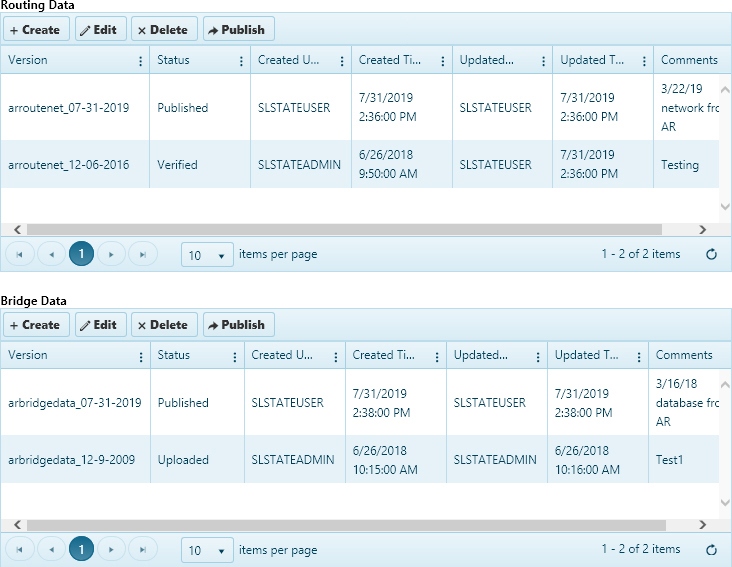
The Data Upload Functionality enables a user to upload a .zip file containing network, graphic, or bridge files. The user can also publish the uploaded files. The files are classified as network, graphic, or bridge files based on their extensions and are stored in corresponding locations. The uploaded .zip file is stored in blob format in the database along with the relevant information, such as file size, version, status, created user, created time, etc. The .zip file name should be in the proper format, and only one instance of a file can exist at any one time. This document illustrates the method of using the functionality and the various scenarios a user might face while using the functionality.
Note: Use the Analysis Process functionality to upload a .zip file containing bridge analysis exes and its dependencies.
|
PREFID |
SYSTEM PREFERENCE |
VALUE |
USE |
|
260 |
UploadFileExtension |
.zip |
Mandatory Uploaded File Extension |
|
261 |
DataLoaderTempFolder |
C:\Super\Temp |
Location of Temp Folder |
|
262 |
DataLoaderNetworkFolder |
C:\Super |
Location of Folder containing Network |
|
263 |
DataLoaderBridgeFolder |
C:\Super\MD |
Location of Folder Containing Bridge Files |
|
264 |
DataLoaderGraphicFolder |
C:\Inetpub\WWWroot\Super |
Location of Folder Containing Graphic Files |
|
265 |
RouteDataRegex |
routenet[_](?'date'.+) |
Regular Expression to Check Name format of Uploaded Route Data File |
|
266 |
BridgeDataRegex |
bridgedata[_](?'date'.+) |
Regular Expression To Check Name format of Uploaded Bridge Data File |
|
267 |
DataLoaderNetworkFileTypes |
.net,.sp,.tbl,.kpt,.pdt,.rs1,.sia,.sqlite |
Valid Extensions of Network Files |
|
268 |
DataLoaderBridgeFileTypes |
.lib,.ast,.ddr,.lis |
Valid Extensions of Bridge Files |
|
269 |
DataLoaderGraphicFileTypes |
.awb,.awg,.awl,.aws,.awf,.awc,.csv,.xml |
Valid Extensions of Graphic Files |
|
275 |
MaxFileSize |
262144000 |
Maximum File Size Permitted |
|
287 |
MaxNoOfRecords |
10 |
Maximum number of network or bridge files that can be uploaded. |

The Data Upload Page consists of two grids, one with records of .zip files that contain route data and the other with the records of .zip files that contain bridge data. Each grid has a toolbar with four buttons namely: Create, Edit, Delete, and Publish.
Click the Create button to generate a new record (i.e., to upload a file).
Click the Edit button to update an existing record.
Click Delete to remove a record.
Click the Publish button to promote the files within the .zip file to their respective locations on server.
The grid has 7 columns:
Version: The version is the file name.
Status: The status signifies the status of the uploaded file. It can have three values (Uploaded, Verified, and Published).
Created User: This column displays the name of the user who created the record.
Created Time: This column displays the creation time of the record.
Updated User: This column displays the name of the user who has last updated the record.
Updated Time: This column displays the time at which the record was updated.
Comments: This column displays comments contributed by the user.
After Logging in, click on My Admin.
On the left-hand side, in the System Maintenance section, click on Data Upload.
To add a record, the file should meet the following criteria:
Only files with .zip extension are allowed (refer to System Preferences on page 1).
The filename should be in proper format (i.e., the route filename should be in the format: routenet_’date’.zip format, and for bridge data, the filenames conform to: bridgedata_’date’.zip.
A prefix indicating the state name is allowed (for example: mdroutenet_08-23-2016.zip). See System Preferences on page 1 for more information.
The date in filename should be in the format specific for the state (e.g., for Maryland, the date format is mm-dd-yyyy, whereas for Queensland, the date format is dd-mm-yyyy).
The file size should not exceed the permissible file size. The permissible file size varies from state to state (refer to System Preferences on page 1).
Adding duplicate records are not allowed; the .zip file to be uploaded must be unique.
The following are the steps to add a record:
Click the Create button on the grid to which you wish to add a record.
A pop-up appears.
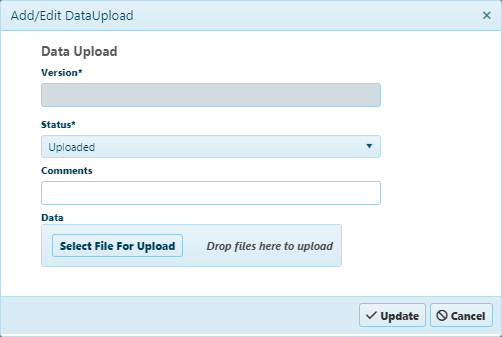
The Version field is disabled, because the version will appear automatically when the upload is complete.
The Status drop-down is read-only, defaulting to "Uploaded".
Enter Comments in the field provided.
Click the Select Files For Upload button then navigate to the file you wish to upload and double-click it.
When the progress bar indicates that the upload is complete, click OK.
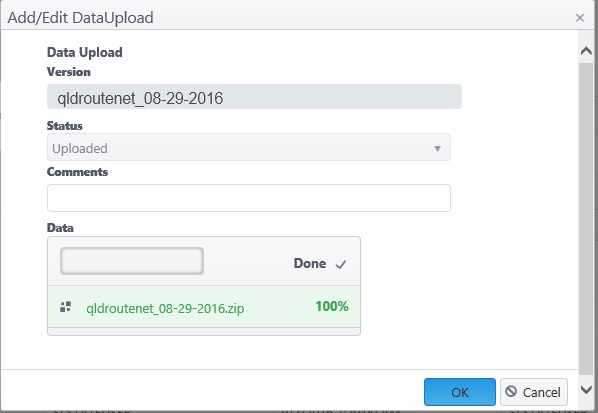
A message indicating the success of the transaction will appear.

Note: The maximum number of files that can be uploaded (for either route or bridge) is 10 (refer to System Preferences on page 1). If 10 records are already present and you wish to upload a new version, then you must delete one of the existing versions.
Select the record to be edited.

Note: You must select a record to update. If you click the Edit button without choosing a record, you will receive a message urging you to make a choice prior to clicking the button.
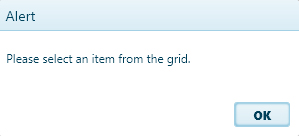
When you click the Edit button, a dialog will open.
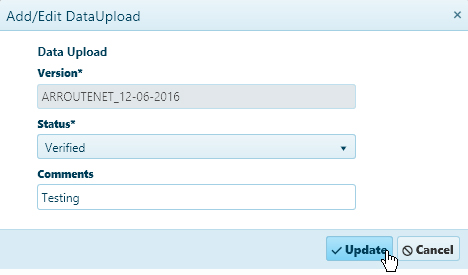
The dialog offers three fields:
The Version field is read-only; it contains the version of the uploaded file.
The Status field is a drop-down with options that designate whether the record is Updated, Verified, or Published.
Note: The Status must proceed from Updated to Verified and only then on to Published; changing the status directly to Published is not allowed.
The Comments field presents notes contributed to the record.
Make your changes then click Update.
A message signifying the success of the operation will appear.
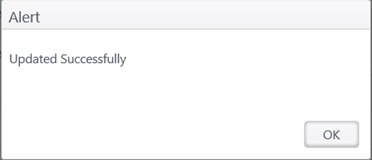
Select the record you wish to remove from the table then click the Delete button.
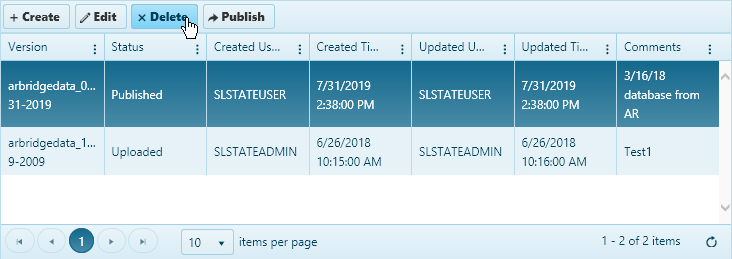
Note: You must select a record to delete. If you click the Delete button without choosing a record, you will receive a message urging you to make a choice prior to clicking the button.

When you click Delete, a confirmation pop-up will appear.
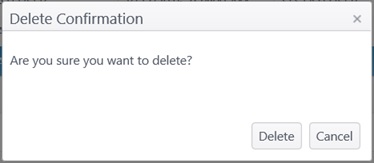
Click the Delete button on the pop-up to confirm that you wish to eliminate the selected record.
A message signifying a successful deletion will appear.
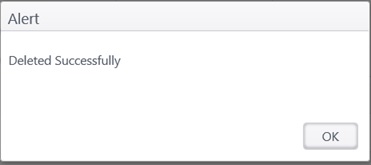
Note: Records with the Published status cannot be deleted.
Note: Only one Dataset may have the "Published" status at any time. The published dataset is actively being used by the system to validate routes.
Select the record you wish to publish.

Note: You must select a record to publish. If you click the Publish button without choosing a record, you will receive a message urging you to make a choice prior to clicking the button.

Note: Only a Verified record can be published.
When you click the Publish button, an alert signifying successful publication pops up. Click OK.
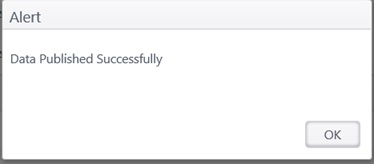
To re-publish an already published record, the status of the record must be changed to Verified so that the record can then be published using the above steps.
There can be only one published record existing at any given time.
For Route .zip files, only files with the following extensions will be published:
Network Files: .net, .sp, .tbl, .kpt, .pdt, .rs1, .sia, .sqlite (refer to System Preferences on page 1)
Graphic Files: .awb, .awg, .awl, .aws, .awf, .awc, .csv xml (refer to System Preferences on page 1).
For Bridge .zip files, only files with the following extensions will be published:
While adding a record, you will get the following messages in the scenarios mentioned.
If you attempt to upload a duplicate file:
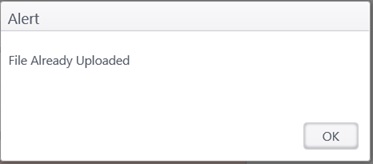
If you attempt to add a file with an invalid extension:
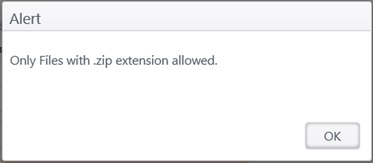
If you attempt to add a file with a filename in an invalid format:
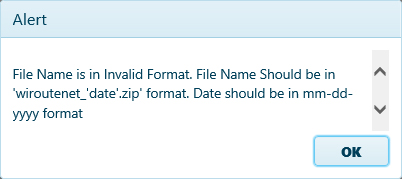
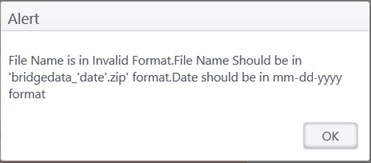
If you attempt to add a file with a date in the filename in an invalid format:
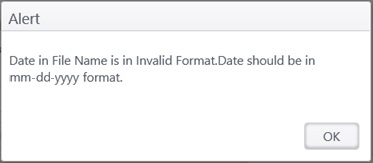
If you attempt to add a file that exceeds the permissible limit:
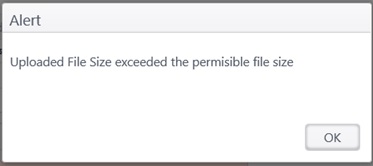
If you attempt to add a record without uploading a file:
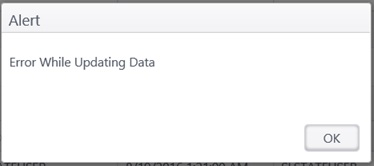
While using the Edit dialog for a record, you will get the following message if you change the status to Published then click the Update button.

While Deleting a record, you will get the following message when you attempt to delete a record that has the Published status.
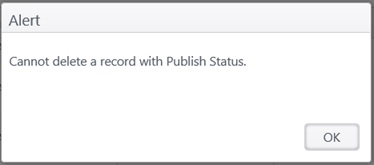
While Publishing a record, you will get the following messages in the scenarios mentioned.
If you attempt to publish a second record while another remains published:
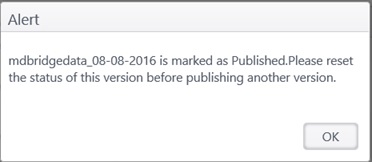
If you attempt to publish an already published record directly without changing the status to Published:
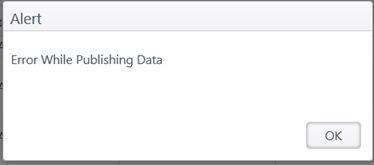
This message will display when you attempt to update, delete, or publish a locked record.
